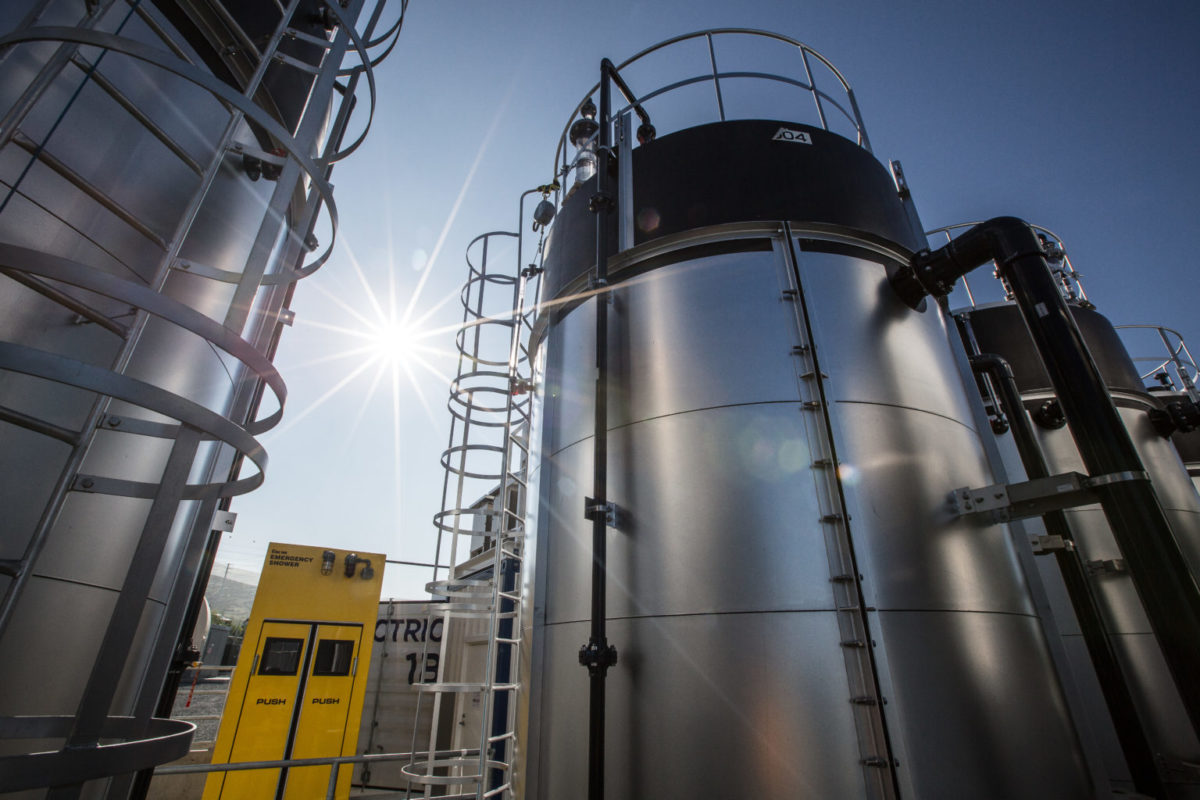From pv magazine Global
San Diego Gas & Electric (SDG&E) and Sumitomo Electric (SEI) completed a zero-emissions microgrid pilot project using a vanadium redox flow (VRF) battery.
Microgrids, mini power grids that can operate independently of the larger grid and keep critical facilities powered during emergencies and power shut downs, are becoming more important in states like California that have seen a dramatic increase in wildfires, critical weather events, and other causes. Just last week about 6,000 SDG&E customers were without power due to unknown causes.
The 5-year demonstration project is located in the Bonita community in south San Diego County. The 2MW VRF battery at the heart of the demonstration project can store 8MW hours of energy, potentially enough to power the equivalent of about 1,000 homes for up to four hours. In one of the test runs the 2MW/8MWh VRF battery powered 66 residential and commercial customers for close to five hours.
“Climate conditions increasingly threaten the continuity of essential services that our customers expect and deserve from us, which is one of the many reasons we are so focused on innovation and technology,” said SDG&E CEO Caroline Winn. “There is a critical need to develop breakthrough solutions like zero-emissions microgrids to not only minimise disruptions, but to also support the transition to a cleaner, safer and more reliable energy grid of the future.”
Different from more prevalent stacked lithium-ion battery cells, VRF batteries consist of tanks of liquid electrolytes and pumps that charge and discharge electrons to the grid. According to the U.S. Energy Department, VRF technology has several upsides including the potential to store MWh of power in simple designs, the ability to discharge power for up to 12 hours at a time, and the fact that VRF batteries do not present a fire hazard and use no highly reactive or toxic substances, can sit idle for long periods of time without losing storage capacity, and more.
Downsides include the fact that VRBs generally have lower energy densities than other battery types (although increased energy density would help reduce costs and broaden applications), the standby current drain can lead to power loss, the technology’s small operating temperature window requires the use of air conditioning systems that can result in significant energy losses, and the cost of the vanadium electrolyte.
During the pilot, the batteries charged when solar energy was abundant and discharged during peak hours to meet demand.
The microgrid demonstration project was completed late last year and included two successful tests. One was a seamless transition in which customers did not experience any loss of power when they were transitioned to the microgrid for electric service. The other was a black start, where microgrid operators established and sustained service after a complete loss of power. Customers experienced a momentary outage before they were transitioned to the microgrid, which operated in island mode separate from the power grid. The microgrid provided energy service as expected, even on a cloudy day when solar power output was not optimal.
SDG&E began operating the first utility-scale microgrid in America in 2013 in Borrego Springs and is currently in the process of upgrading it to run on 100% renewable energy. The utility is building four additional microgrids and is on track to integrate about 145MW of utility-owned energy storage with the local grid in 2022.
This content is protected by copyright and may not be reused. If you want to cooperate with us and would like to reuse some of our content, please contact: editors@pv-magazine.com.









By submitting this form you agree to pv magazine using your data for the purposes of publishing your comment.
Your personal data will only be disclosed or otherwise transmitted to third parties for the purposes of spam filtering or if this is necessary for technical maintenance of the website. Any other transfer to third parties will not take place unless this is justified on the basis of applicable data protection regulations or if pv magazine is legally obliged to do so.
You may revoke this consent at any time with effect for the future, in which case your personal data will be deleted immediately. Otherwise, your data will be deleted if pv magazine has processed your request or the purpose of data storage is fulfilled.
Further information on data privacy can be found in our Data Protection Policy.